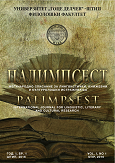TRADITIONAL ARCHITECTURE – MODELS OF PROTECTION AND PRESERVATION OF FUNCTION
DOI:
https://doi.org/10.46763/palim2090213nAbstract
The development of traditional architecture of the 18th, 19th and early 20th centuries forms the basis for the analysis of possibilities, their incorporation into contemporary function and need. The analysis of the existing capacities in the rural tourism creates a direction of a certain development of the capacities on the territory of the state. Presentation of conservation interventions provides a realistic picture of the possibilities of adaptation of residential buildings to fit the contemporary needs of rural tourism. At the same time, through the presented methods, analyzes and guidelines for conservation, a certain valorisation of the values of the buildings with historical traditional characteristics is set, as part of the Balkan heritage. The realization of a certain form of rural tourism synthesizes cultural, natural and social resources as a definite integral model. The process of modern tourism development should encourage the preservation of authentic traditional indigenous architectural values, adapted to the needs of the local population, with a view to preserving the original form of traditional buildings. Development plans at regional level must include projects to implement the traditional residential architecture, thus creating new spatial capacities, while at the same time putting contemporary architecture into function by raising the level of protection of buildings, as part of the region's national cultural heritage.
Keywords: conservation, cultural heritage, rural, ambient.


